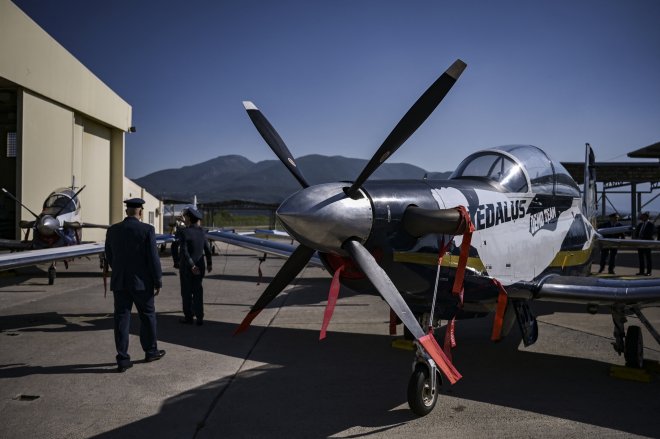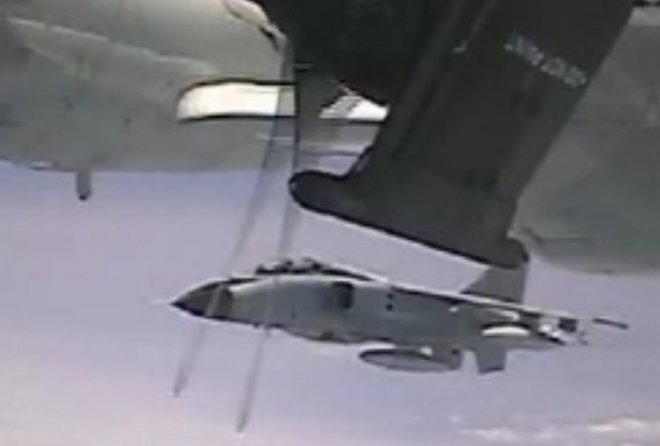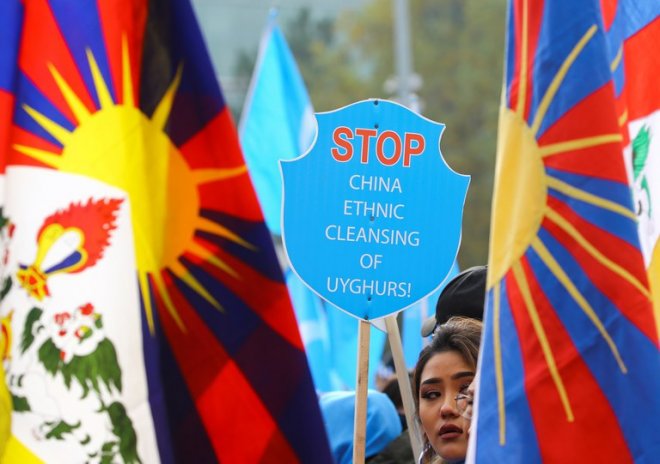Vietnam’s military jets crash due to age, lack of pilot training, experts say
A spate of military jet crashes in Vietnam, including one last month that killed the pilot, can be blamed on poor training and an aging fleet of obsolete warplanes, experts told Radio Free Asia.State media reported that a Sukhoi Su-22 fighter jet piloted by Capt. Tran Ngoc Duy crashed Jan. 31 while trying to land at Yen Bai, an airbase in the country’s north, following a training mission.
The crash was the third deadly warplane accident since 2016, and all three point to an over reliance on flight simulators, as pilots spend very little time in planes, Carl Thayer, a professor at the Australian Defence Academy, told RFA’s Vietnamese Service.
Vietnam’s air force has a fleet of 71 Soviet-era planes, many of which were acquired in the 1980s, he said.
“In 2019, U.S. defense officials serving in Hanoi reported that Vietnamese military officers had expressed their unhappiness with Russian equipment and services,” Thayer said.
The cause of the January crash is likely due to either faulty landing gear or pilot error, he said.
“According to one study, Vietnamese air force pilots use virtual flight rules or radar vector in perfect weather only and have no experience with adverse weather conditions,” he said.
Accident captured on video
State media reported that the Su-22 encountered a problem while landing and Duy was ordered to eject. He then tried to correct the problem manually but failed, and the plane crashed.
In a video about the accident filmed by a cell phone and posted on Facebook by one of the pilot’s relatives, when the Su-22 was about to land on the airstrip, it suddenly tilted and wobbled and a small flame started in the cockpit. Then, the pilot seat ejected but a parachute was not seen.
Shortly after that, the plane crashed onto the runway, causing an explosion with a big column of smoke and fire.
Video vụ Su-22 rơi: Phi công đã phóng ghế bay và nhảy dù? #RFAVietnamese #SU22YenBai #Su22Vietnam #Vietnam #Vietnamairforce #Yenbai #PhicongTranNgocDuy pic.twitter.com/tSITeoW8Ne
— Đài Á Châu Tự Do (@DaiAChauTuDo) February 1, 2023
The Vietnamese Ministry of National Defence launched an investigation after the accident, but so far has not announced any findings.
Capt. Tran Ngoc Duy was posthumously promoted to major. He had served 13 years in the air force and piloted many types of aircraft, logging 725 flight hours
Old aircraft
Prof. Zachary Abuza from the U.S. National War College said that Vietnam’s aging fleet was definitely a problem.
“The People’s Army Air Force has a lot of very old airframes, including the Su-22, and many are at the end of their lifecycle,” he said. “Another problem is that since the airframes, especially the newer ones like the Su-27, are very expensive, there is a reluctance to use them and train on them.”
Abuza said both factors work to create a vicious cycle. The lack of training on the expensive models results in more accidents when they are flown.
Pilot training these days is a rarity due to a lack of budget and fuel, said Nguyen Dinh Am, a journalist who once worked for the Vietnam Heritage tourist magazine.
“I live near Gia Lam Military Airport [in Hanoi] and I can easily hear an aircraft taking off, but these days I rarely hear airplane sounds,” he said. “Ancient aircraft, improper maintenance, and pilots with poor flying reflexes due to lack of practice could lead to mistakes and accidents.”
At the National Party Congress in early 2021, the government approved a major military modernization program that prioritized air force upgrades.
Nguyen The Phoung, a lecturer from the Faculty of International Relations, Ho Chi Minh City University of Economics and Finance, told RFA that upgrades were badly needed to protect Vietnam’s sovereignty.
“The entire fleet of Vietnam’s fighter and fighter-bomber aircraft are of Soviet-Russian origin,” he said. “The procurement of fighter aircraft is a big investment. Besides purchasing equipment, training, maintenance, and suitability for combat requirements are also needed,” he said.
But because Russia is the supplier of Vietnam’s combat aircraft, rapid modernization is not feasible immediately because Moscow is fighting a war in Ukraine, he said. “Obviously, Vietnam cannot buy Russian weapons freely like it did in the past. It needs to take the international community’s reactions into account.”
Thayer said Vietnam was in “critical need” to modernize.
“In late-2020, Vietnam moved to restructure its logistics support services to improve maintenance, repair and overhaul of its legacy combat air fleet,” he said. “Special priority has been accorded to maintaining, repairing and overhauling Vietnam’s Su-30MK2 multi-role jet fighters.”
Both Thayer and Abuza said Vietnam was looking to purchase a fifth-generation fighter from Russia like the Su-30, -35, or -57, but Moscow has been capped on weapons exports after it annexed Crimea from Ukraine in 2014. The invasion of the country in 2022 further decreases the likelihood of such a transaction.
American shift?
In December, Reuters reported that U.S. defense companies had discussed supplying military gear, including helicopters and drones, to Vietnam in talks with top government officials, a new sign that Vietnam may reduce its reliance on Russian arms.
Thayer said that in late 2021, Vietnam placed an order for twelve T-6 jet trainers and Vietnamese pilots commenced participation in the U.S. Air Force Aviation Leadership Program in the United States, moves that may lay the foundation for the sale of the U.S.-made F-15E Strike Eagle to Vietnam by the end of this decade.
 Vietnam placed an order in 2021 for American T-6 training aircraft [shown] and Vietnamese pilots began participating in the U.S. Air Force Aviation Leadership Program. Credit: AFPHanoi also ordered six Boeing Insitu ScanEagle unmanned aerial vehicles for its Coast Guard under the U.S. Maritime Security Initiative in 2019, he said, and suggested that the war in Ukraine has raised the salience of drones and other UAVs in armed combat, meaning Vietnam would be a great market for U.S.-made weapons.
Vietnam placed an order in 2021 for American T-6 training aircraft [shown] and Vietnamese pilots began participating in the U.S. Air Force Aviation Leadership Program. Credit: AFPHanoi also ordered six Boeing Insitu ScanEagle unmanned aerial vehicles for its Coast Guard under the U.S. Maritime Security Initiative in 2019, he said, and suggested that the war in Ukraine has raised the salience of drones and other UAVs in armed combat, meaning Vietnam would be a great market for U.S.-made weapons.“There are two constraints on Vietnam’s purchases of non-Russian weaponry. The first is the legacy of dependency on Russia for spare parts, servicing, maintenance support and language. The second constraint is cost and time,” he said. “U.S. and European weapons are expensive and Vietnam would need to develop an appropriate logistics support network that would take considerable time to develop.”
But Abuza said there was no chance that Vietnam would buy American jets.
“I am paying close attention to the recently upgraded ties with South Korea, now a comprehensive strategic partner,” Abuza said. “South Korea has been trying to sell its latest fighter overseas. It’s a lot more expensive than the Russian fighters, but still cheaper than American or European [ones].”
According to former military intelligence officer Vu Minh Tri, it is very difficult for Vietnam to import Western countries’ weapons due to its limited budget.
He said that Vietnam spends most of its defense budget on wages, food, and supplies, while the funding for weapons makes up only a small part.
Corruption and the lack of transparency are the biggest challenges the military faces, he said.
“In general, Vietnam’s procurement of weapons and military equipment is not transparent,” Tri said. Vietnam’s “partners have told me that those assigned to purchase weapons always increase the purchasing prices to keep the difference. Western countries don’t accept this practice.”
In addition, Western countries do not trust Hanoi because Vietnam considers China a close ally, and Vietnam does not trust the United States and other Western countries, thinking they intend to topple the current regime, Tri said.
Translated by Anna Vu. Edited by Eugene Whong and Malcolm Foster.
[圖擷取自網路,如有疑問請私訊]
|
本篇 |
不想錯過? 請追蹤FB專頁! |
| 喜歡這篇嗎?快分享吧! |
相關文章
AsianNewsCast




















